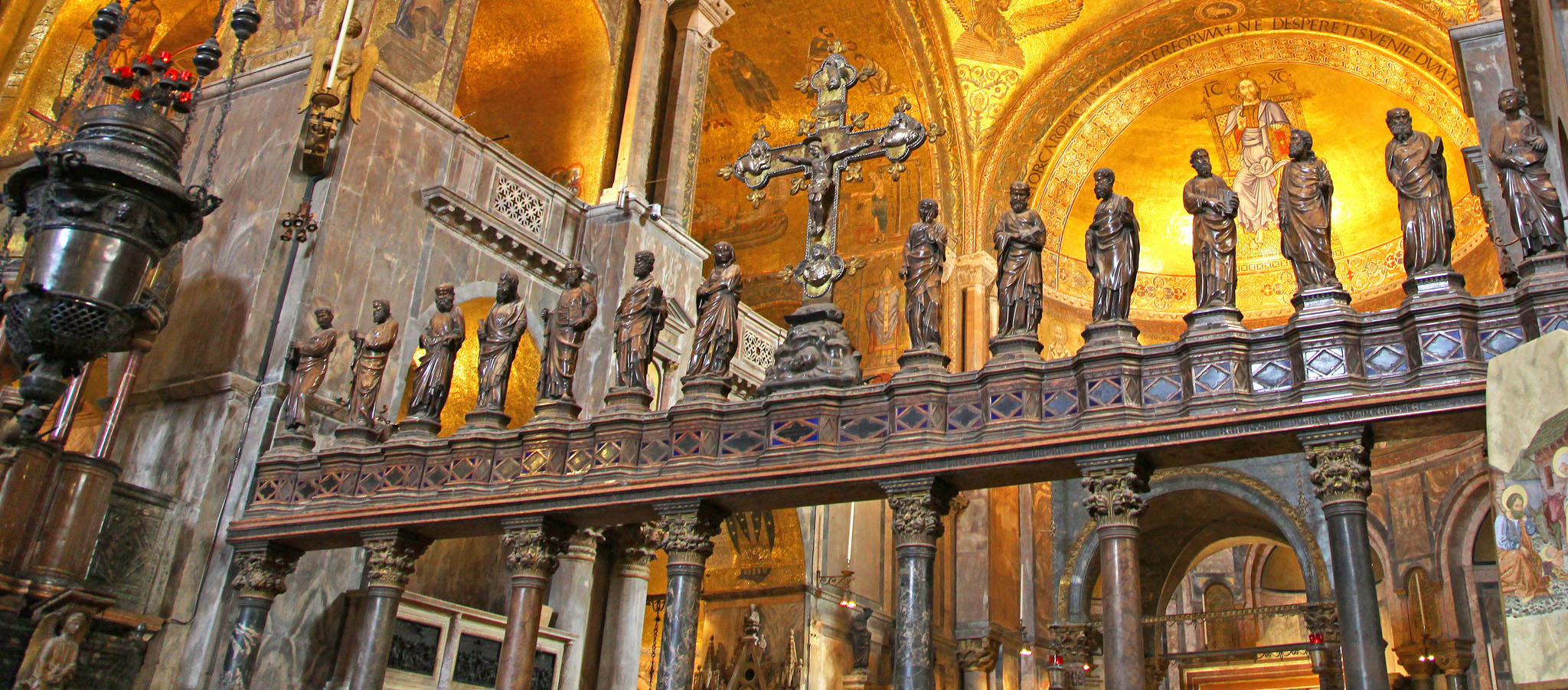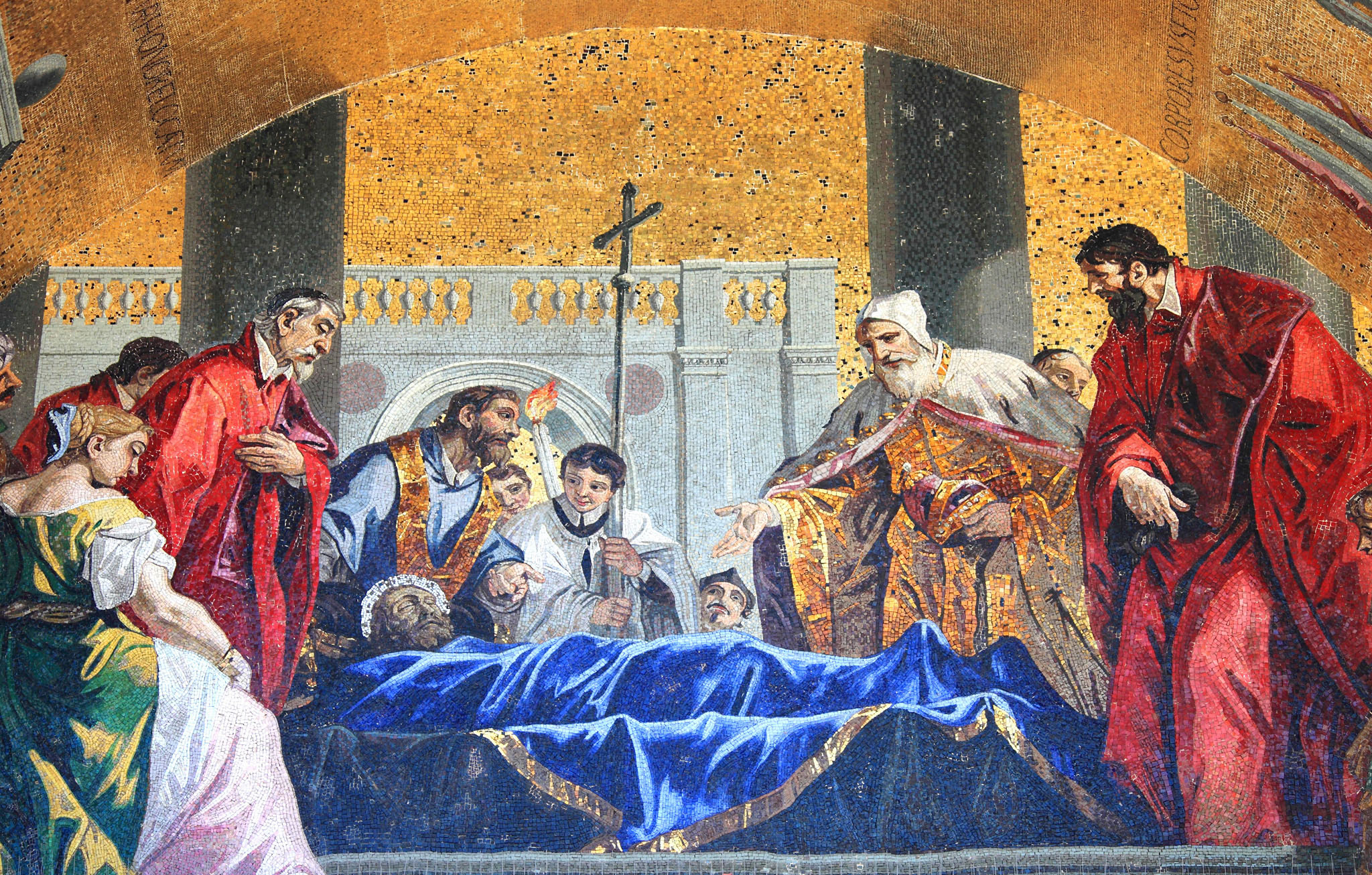BASILICA ARCHITECTURAL FEATURES

Basilica Floor Plan
1. Galleries
The airy catwalks over the body of the basilica reflect the eastern tradition of segregation in worship, as they were exclusively for women. They are closed to visitors.
2. Stone Wall Slabs
Brick-faced until the 1100s, the walls of the basilica were then covered with stone slabs from the East, sliced lengthwise to produce a kaleidoscopic effect.
3. Romanesque Stone Carvings
The exquisite semicircular stone carvings over the central doorway were executed between 1235 and 1265 and still bear traces of their original coloring.
4. The “Victory Bringer”
This revered Byzantine icon is given pride of place in the Madonna of Nicopeia Chapel. Rumored to have been executed by St. Luke, it was carried into battle for its miraculous powers.
5. Baptistry
Aglow with 14th-century mosaic scenes of the life of St. John, this is also home to the tomb of Italian architect Jacopo Sansovino. Open for prayer only.

6. Zen Chapel
The ornate decoration in this chapel was executed for the funeral of its namesake, Cardinal Zen, in 1521, in recognition of his gifts to the state. Open for prayer only.
7. Iconostasis
This elaborate screen separates the worship area of the chancel from the nave. Atop its eight columns are Gothic-style statues of the Virgin and the Apostles, sculpted by the Dalle Masegne brothers in 1394.

8. Byzantine Pierced Screens
Influenced by eastern architecture, delicate geometrical designs and latticework stone screens are featured on all three façades, in the atrium and loggia.
9. Porta dei Fiori
This doorway on the northern façade bears a 13th-century nativity scene surrounded by Moorish arches.
10. Altar Columns
Four finely carved alabaster and marble columns support a canopy at the altar, beneath which lies the body of St. Mark.
ST. MARK, PATRON SAINT OF VENICE
Although the well-loved saint of Byzantium, St. Theodore, had been appointed protector of Venice by the Byzantine emperor, the fledgling republic felt in need of a saint of its own. According to legend, in CE 828, two adroit Venetian merchants filched the body of St. Mark from a monastery in Alexandria, transporting it under layers of pork fat to conceal it from Muslim guards. The welcome in Venice was triumphant, and the story was recounted in countless paintings and mosaics. The remains, however, were lost for years, until an arm miraculously broke through a column in 1094 (marked by a small cross, left of the Altar of the Sacrament) in answer to a prayer. St. Mark now rests in peace beneath the basilica’s main altar. The ubiquitous winged lion representing St. Mark could be found throughout the republic as the trademark of Venetian dominion: it is often shown with two paws in the sea and two on land, to symbolize the geography of Venice.
TOP 10 VENICE RELICS
1. Milk of the Virgin Mary, Basilica Treasury
2. Blood of Christ, Basilica Treasury
3. Nail from the True Cross, Chiesa di San Pantalon

The Miracle of the Relic of the True Cross on the Rialto Bridge (1494) by Vittore Carpaccio
4. Thorn from Christ’s crown, Basilica Treasury
5. Body of St. Mark, Basilica San Marco

6. Body of St. Lucy, Chiesa di San Geremia
7. Three rocks used to stone St. Stephen to death, Basilica Treasury
8. Skull of St. John the Baptist, Basilica Treasury
9. Leg of St. George, Basilica Treasury
10. Foot of St. Catherine of Siena, Santi Giovanni e Paolo
